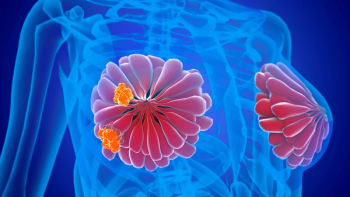
Oncology Nurse Inclusion Is Crucial to Stepwise Opioid Reduction Model
Ronald Bleday, MD, explained that a model to reduce opioid use in patients after colorectal surgery relies on nurses familiar with the relevant surgeries.
Oncology nurses are a crucial part of a stepwise opioid reduction plan that showed efficacy in reducing narcotic drug use for patients who have undergone colorectal surgery in a recent study, said Ronald Bleday, MD, a researcher in the study.
Bleday, who works in the Division of Colorectal Surgery at Brigham and Women’s Hospital in Boston, Massachusetts, said that the stepwise model relies on regionalization, ensuring that patients are receiving
By placing patients in the care of nurses familiar with pain levels expected for colorectal surgery, patients are less likely to receive higher levels of pain medication than appropriate, Bleday explained.
The study on the stepwise plan, which observed 1363 patients undergoing colorectal surgery across 5 institutions from 2017 to 2020, was associated with a reduction in
In addition to treating all patients with an incisional non-narcotic block, the model employed 3 policy changes over the years that standardized opioid prescription for this patient population:
- 2017: Intravenous acetaminophen was scheduled every 6 hours for the first 24 hours following surgery, with oral acetaminophen every 6 hours following
- 2017-2018: The dose and number of opioid tablets dispensed at patient discharge was standardized and provided to clinicians with a reference guide
- 2019: At 1 institution, liposomal bupivacaine was used as a long-acting local anesthetic at the end of surgery, while the other institutions maximized block use.
Transcript
The nurses at the bedside are the first people that a patient asks for any pain medication, so nurses need to be included on the team and educated as to how we, as clinicians, would like our patients to get their pain control.
There are adverse effects (AEs) to each tool that you use to control pain. The blocks can have AEs, the non-narcotic medicines, and, of course, the narcotics. What has really helped is regionalization. Most of our patients go to a floor where the nurses are used to taking care of gastrointestinal surgery patients, so they know the usual rhythm of when pain is the worst. They also know the stepwise approach that we as clinicians are familiar with, which they can offer to the patients.
[We can] always having a narcotic as rescue, but use it as a last resort. This has helped significantly in regionalization because the type of pain that you get after orthopedic surgery is going to be a little bit different than the type of pain you get after colorectal surgery. Working with the nursing leaders, initially, then with all the frontline nurses, we have been able to get everyone on the same page to give good pain control but also to minimize narcotics.
This transcript has been edited for clarity and conciseness.
Reference
McKie KA, Malizia RA, Fields AC, et al. Long-term opioid use after colon and rectal surgery. J Surg Res. 2025;311:86-91. doi:10.1016/j.jss.2025.04.019
Newsletter
Knowledge is power. Don’t miss the most recent breakthroughs in cancer care.




















































































